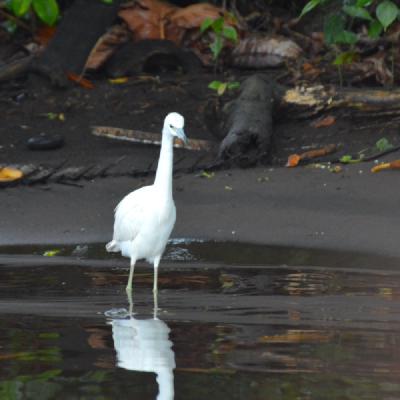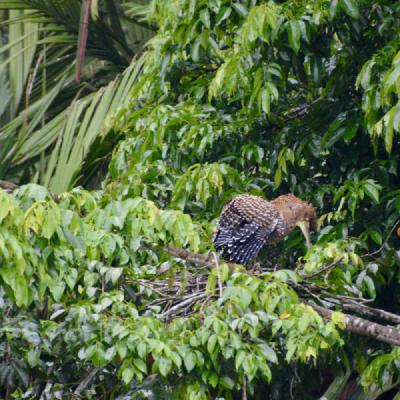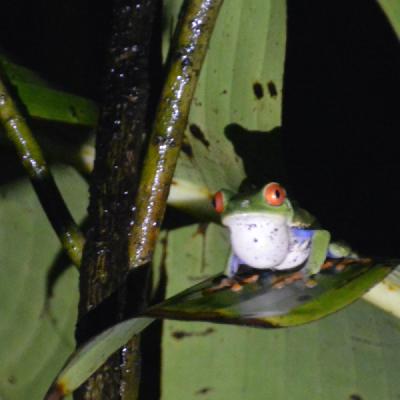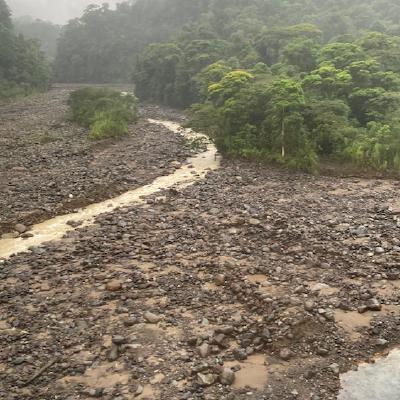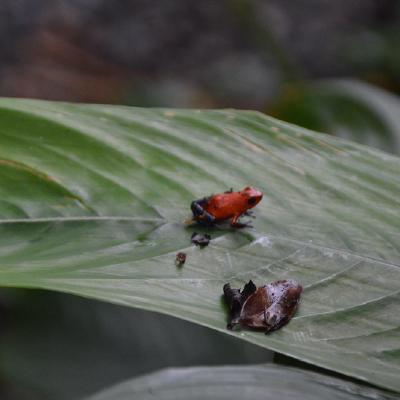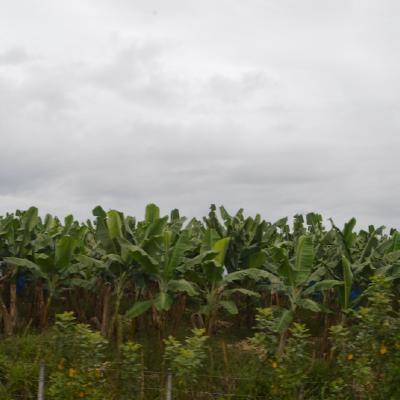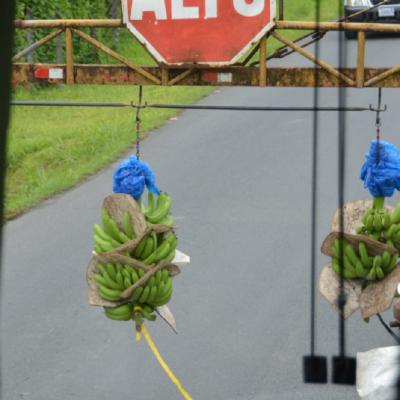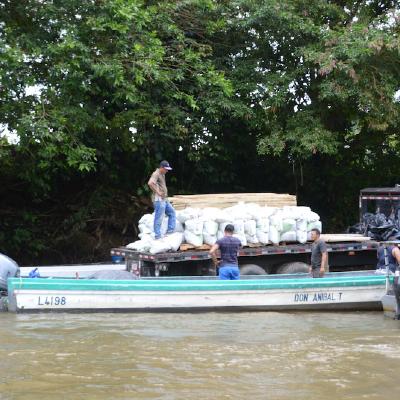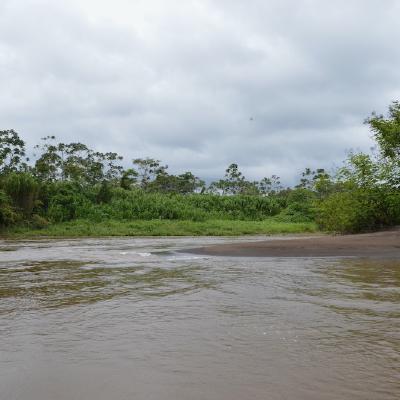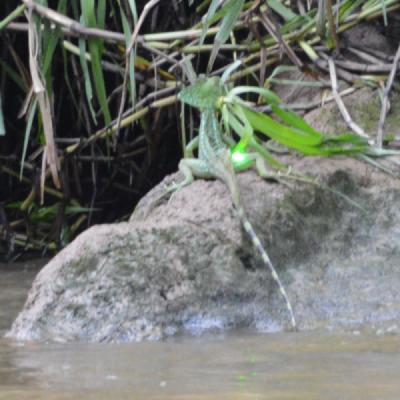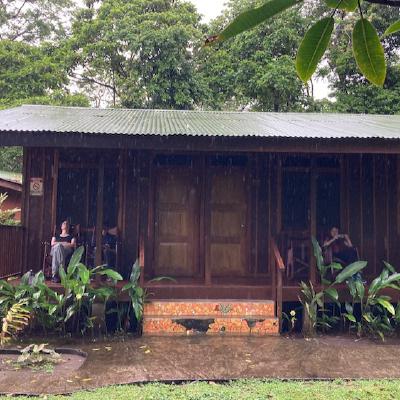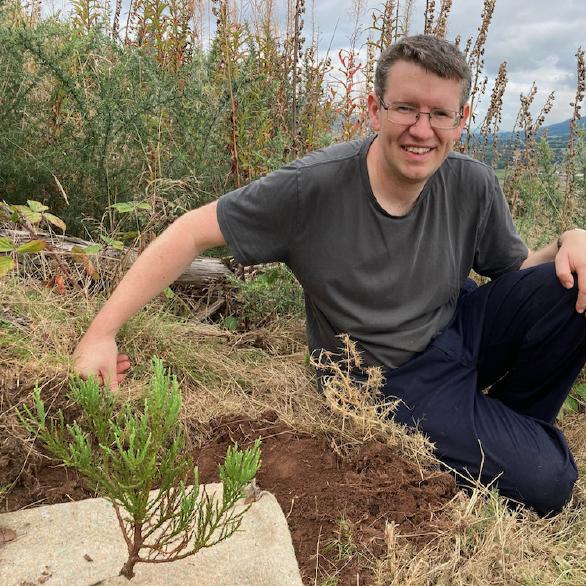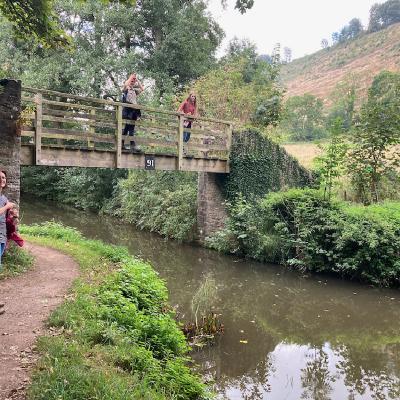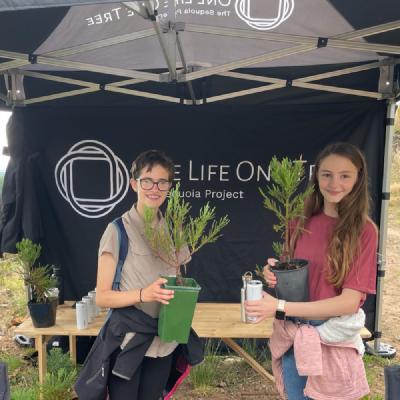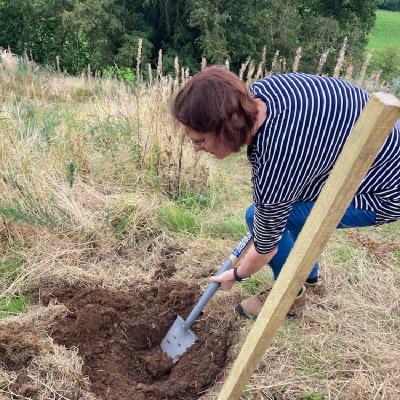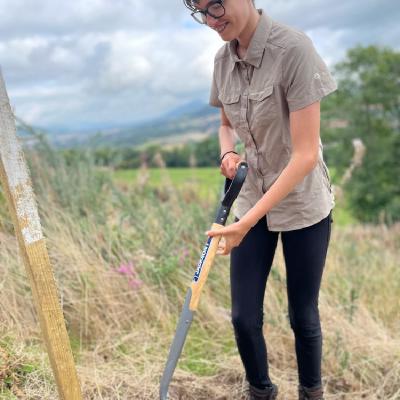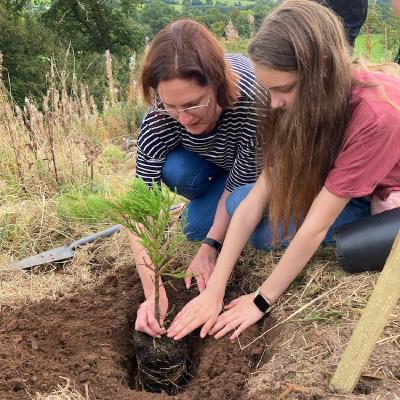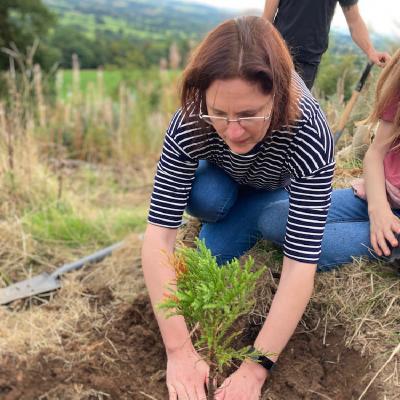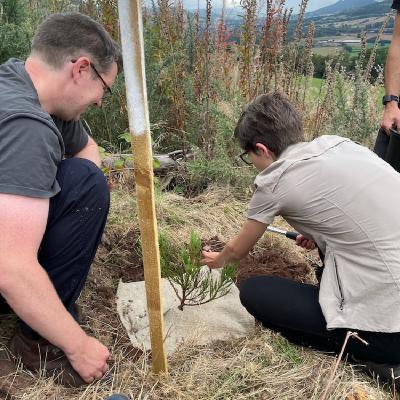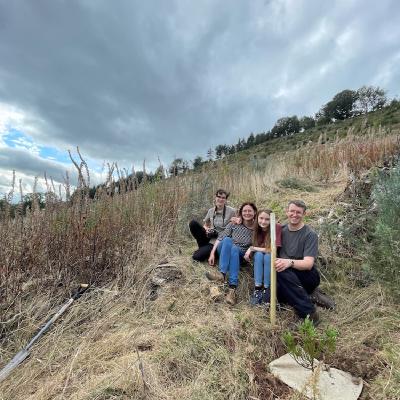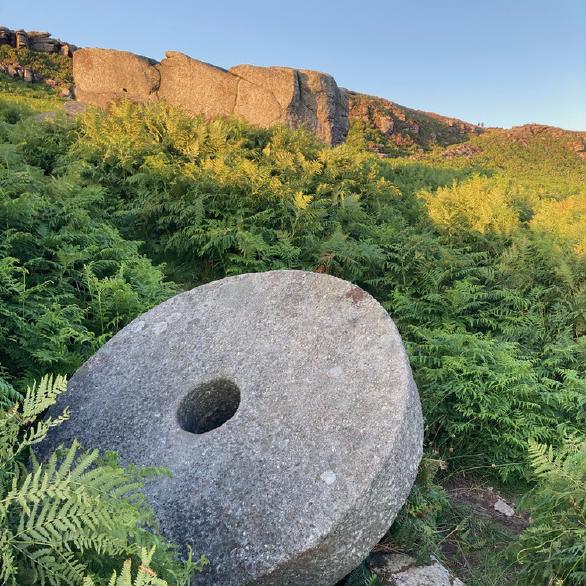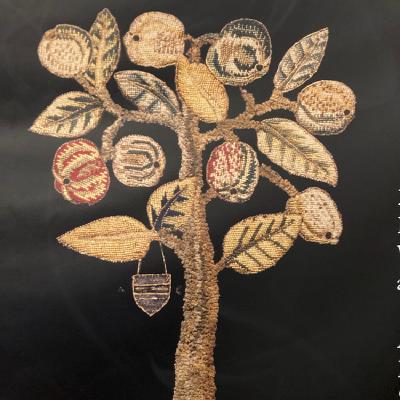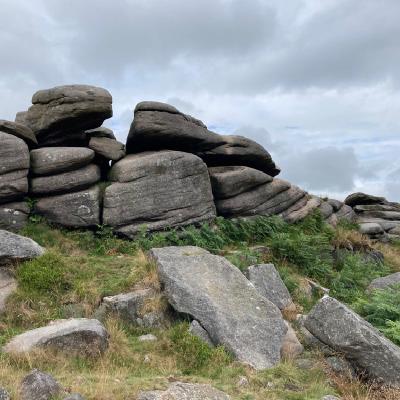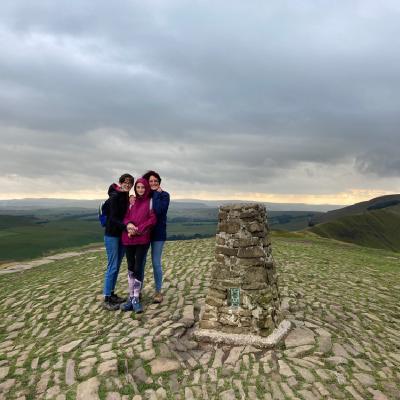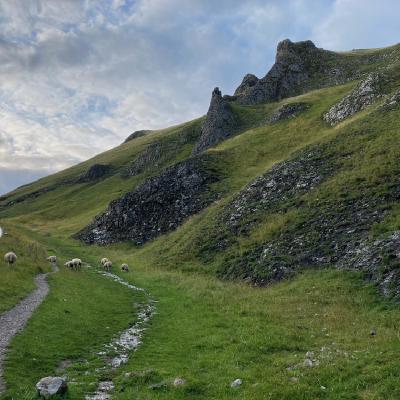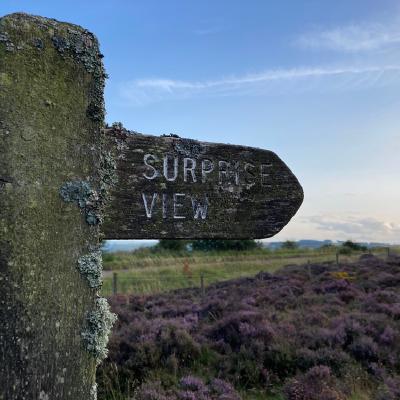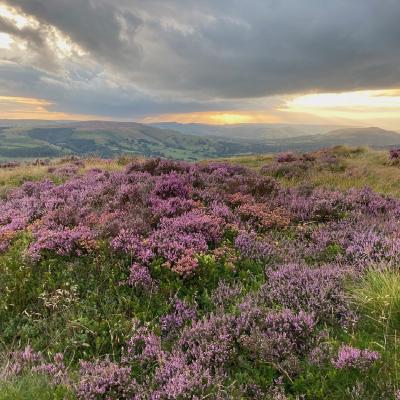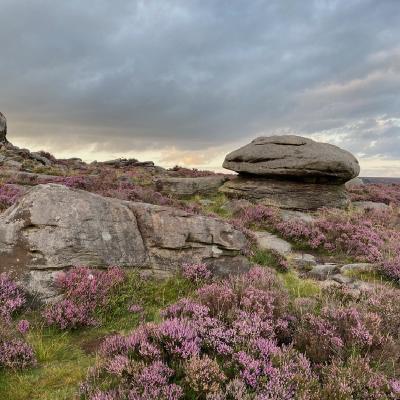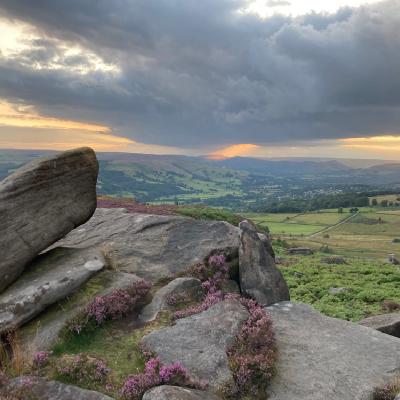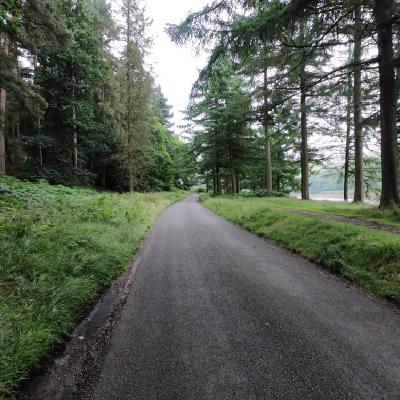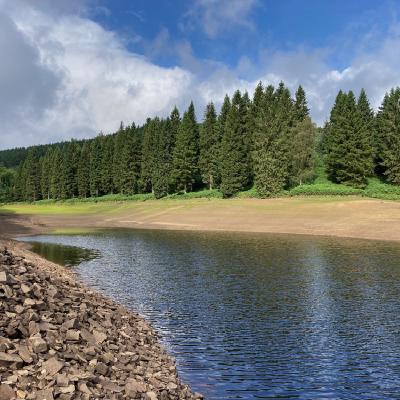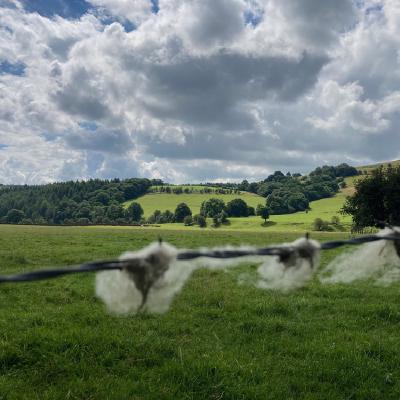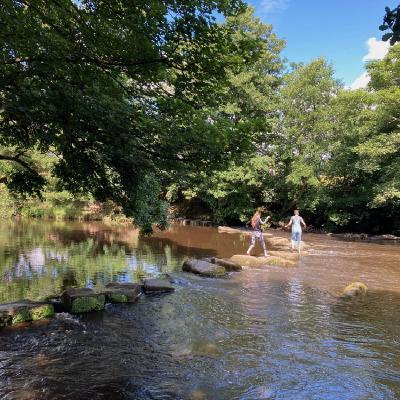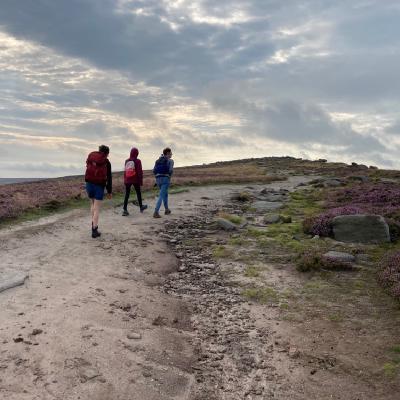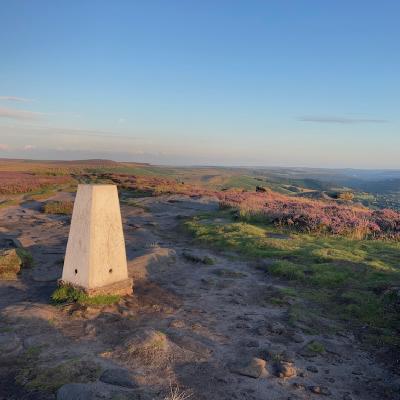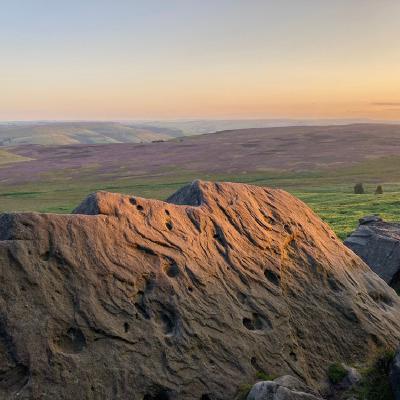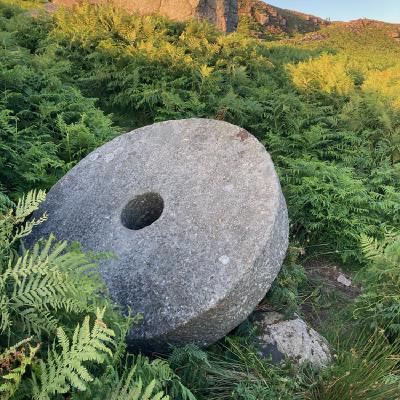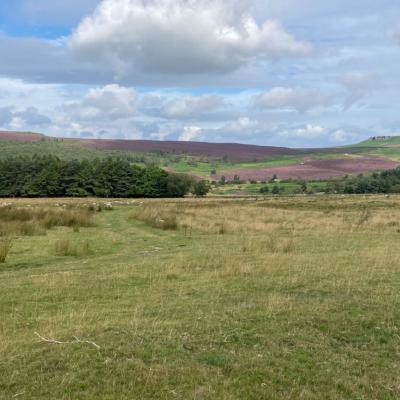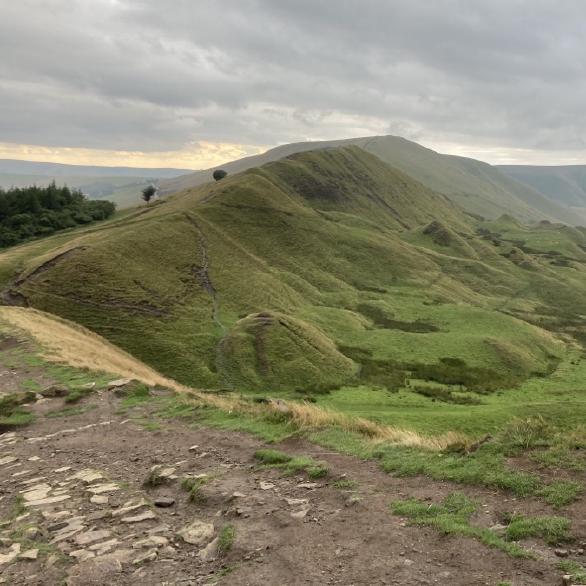Exploring Tortuguero
We started the day with an early wake up (not too hard as we weren't adapted to the timezone yet) at 5am for coffee before an early morning boat tour leaving at 5:30 and taking us around the riverbanks and into the park spotting wildlife. The tour started with the local banks just up from the hotel where we started off with an Iguana lounging on a branch of a tree, just a little way up from a Tiger Heron (Tigrisoma fasciatum). José pointed out the different stages of coconuts growing along the side of the river as they go from green with mostly milk to brown with mostly flesh, we then saw a solitary howler monkey or 'mono congo' (Alouatta palliata).
We then headed down into the national park, stopping briefly for José to provide our ticket reference numbers at the ranger's office to confirm we could all enter the park. As we passed through the parks more vibrant canals, we saw a number of birds including herons, cormorants and then noticed all the tour boats gathered in a circle around something in the water. We joined the circle and then realised what they were watching - dolphins! We continued to watch them for a while - could see a group of them with young, but I didn't manage to time it right to capture a photo of them - was amazing seeing them making their way along the river breaching the surface in their group.
After following the dolphins for a while, we then headed back down the river and heard the sounds of a group of Howler Monkeys and then saw them including a mother with a baby on its back swinging through the trees.
After this we went back to the hotel for breakfast and to decide if we went on the next boat tour as well or not - I decided to go whilst the others stayed and enjoyed the hotel pool. It poured with rain whilst on the tour - thankfully I was wearing the provided poncho, but the rain still seemed to get everywhere! I also managed to see some more wildlife and get some better photos.
It was particularly amazing to see a sloth asleep in the tree just across the river from the hotel, and to see a Basilisk in a different colour (as they change colour)
On this tour we went a slightly different route through the park, into some of the smaller waterways and so saw different wildlife - such as the Caiman and the bats
After lunch we had a walking tour around the gardens of the hotel where we saw a surprising number of things just around the hotel grounds. Some of the highlights were the banana flowers, the hanging nests of Montezuma Oropendola birds, the Green Macaws and the Iguana that was relaxing in the bushes metres away from our rooms!
The last adventure of the day was an evening tree-frog hunt in the trees around the swimming pool by torch light. We managed to see two different tree frogs high in the leaves.
on to Tirimbina

